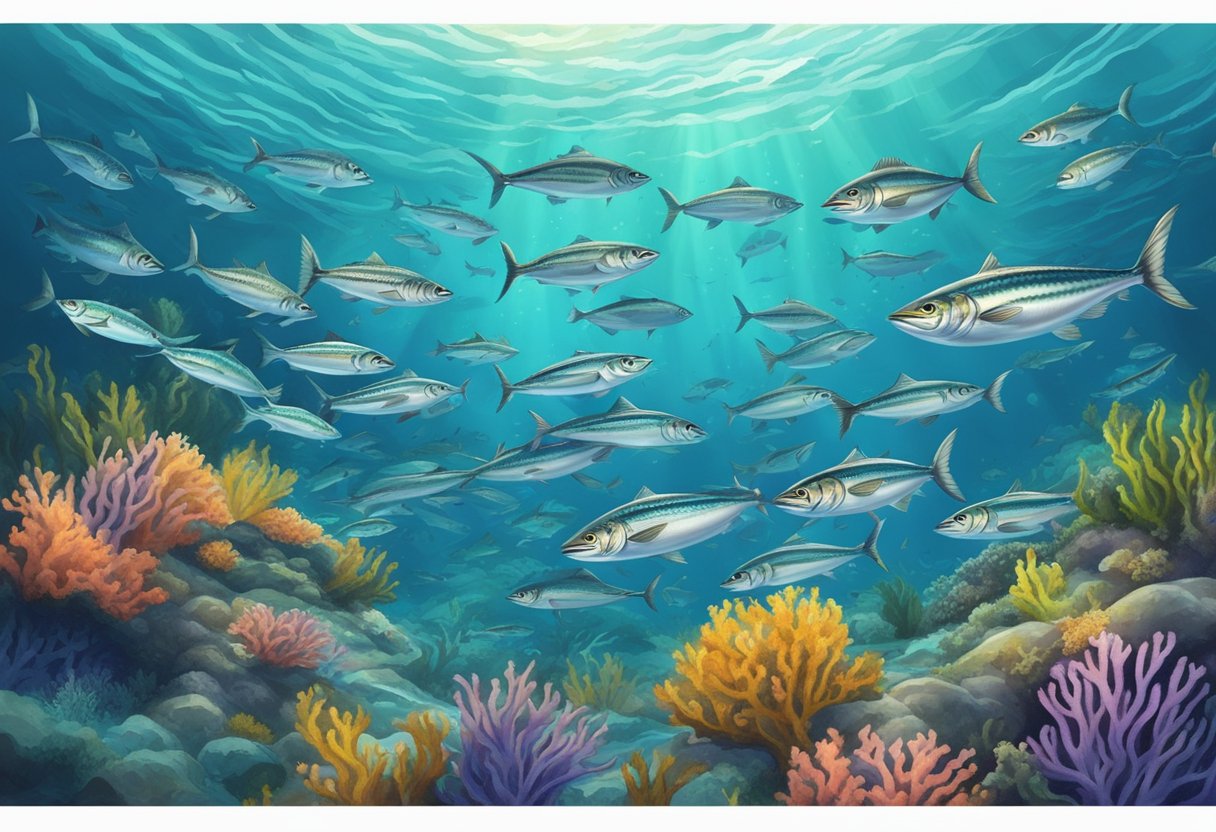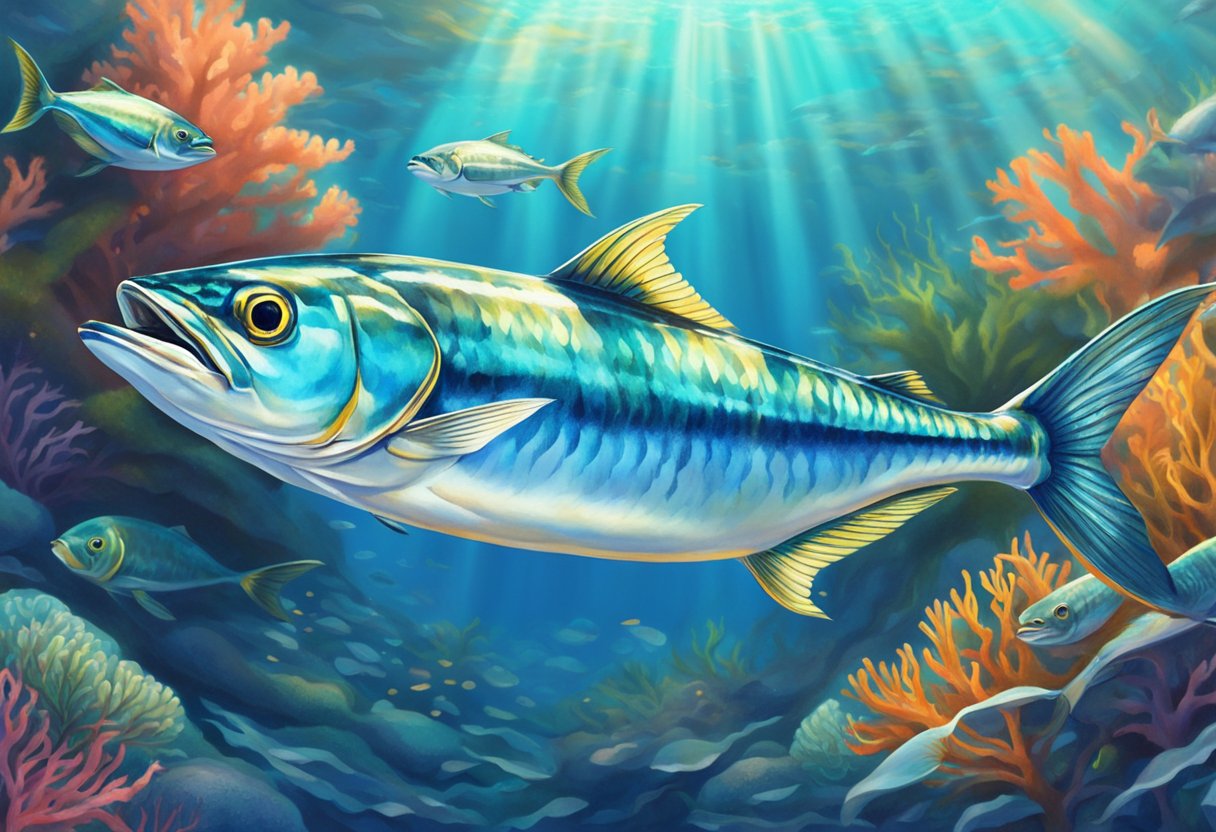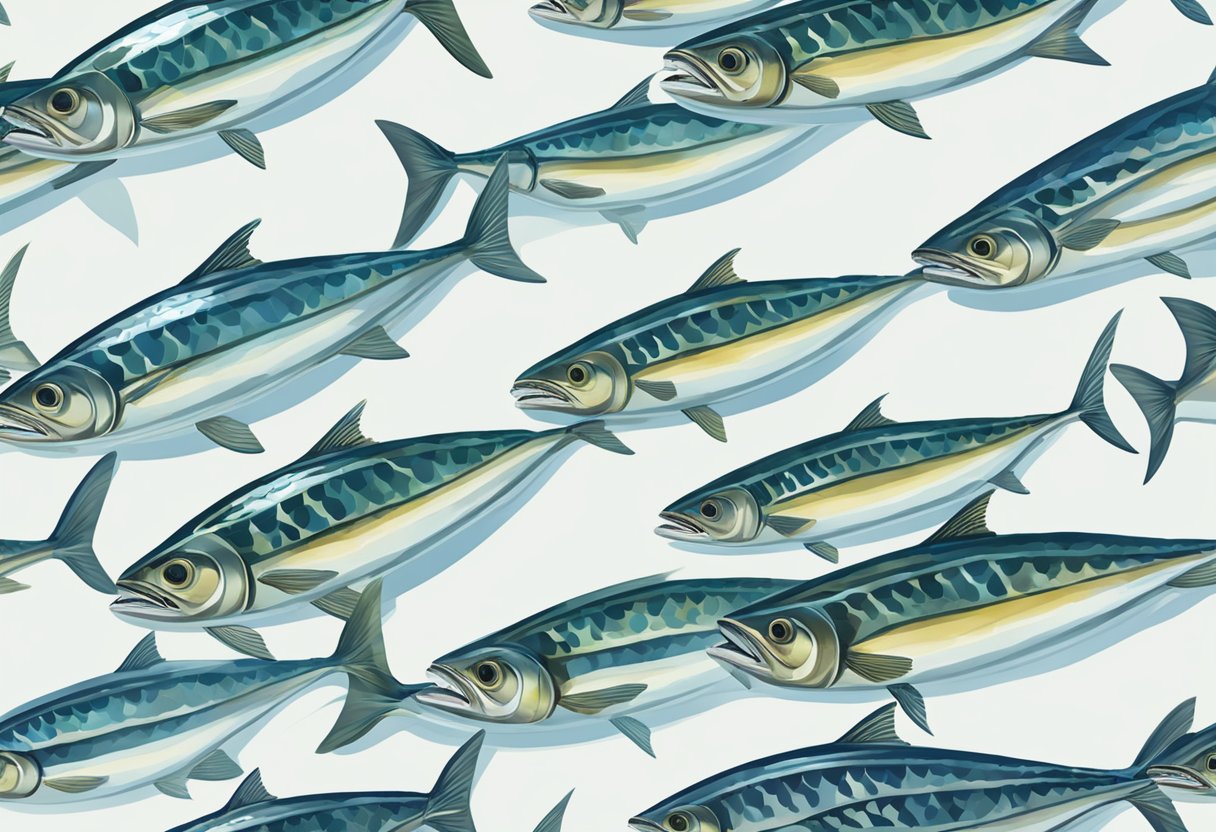
Mackerel Fish: A Guide to Nutrition and Cooking
Mackerel fish is a popular seafood that is enjoyed by many people worldwide. This oily fish is known for its rich taste and numerous health benefits. If you are looking for a delicious and nutritious addition to your diet, mackerel fish is an excellent choice.

Mackerel fish belongs to the family Scombridae and is found in both temperate and tropical seas. It is a pelagic fish that lives along the coast or offshore in the oceanic environment. Mackerel fish is available in several different species, including Atlantic mackerel, Pacific mackerel, and Spanish mackerel.
Mackerel fish is packed with essential vitamins and minerals and is an excellent source of omega-3 fatty acids. It is also low in calories, making it a healthy choice for those who are watching their weight. In this article, we will explore the different species of mackerel fish, its habitat, and the various health benefits it offers.
Key Takeaways
- Mackerel fish is a popular seafood that is enjoyed by many people worldwide.
- It is a pelagic fish that lives along the coast or offshore in the oceanic environment.
- Mackerel fish is packed with essential vitamins and minerals and is an excellent source of omega-3 fatty acids.
Mackerel Species and Habitat

Mackerel is a collective name for a group of pelagic fish that belong to the family Scombridae. This family includes over 30 species of fish, including tunas and bonitos. Mackerel can be found in various oceanic regions, inhabiting both temperate and tropical waters.
Atlantic and Pacific Varieties
There are two main varieties of mackerel: Atlantic and Pacific. The Atlantic mackerel is a small, oily fish that is found in the Atlantic Ocean and the Gulf of Mexico. It has a greenish-blue back and silvery sides. The King mackerel, also known as the Atlantic kingfish, is a larger species that is found in the western Atlantic Ocean. It has a dark blue back and silvery sides.
The Pacific mackerel, also known as the Pacific chub mackerel, is found in the Pacific Ocean. It is a smaller species than the Atlantic mackerel, with a greenish-blue back and silver sides. The Blue mackerel, also known as the Japanese mackerel, is a larger species that is found in the Pacific Ocean. It has a blue-green back and silver sides.
Habitat and Distribution
Mackerel can be found in both temperate and tropical seas around the world. They are primarily coastal fish, but they can also be found offshore in the oceanic environment. The Atlantic mackerel is found in the North Atlantic Ocean, from the Gulf of Mexico to Norway. The King mackerel is found in the western Atlantic Ocean, from North Carolina to Brazil.
The Pacific mackerel is found in the eastern Pacific Ocean, from Alaska to Chile. The Blue mackerel is found in the western Pacific Ocean, from Japan to Australia. Spanish mackerels, which are a type of mackerel, are found in the Atlantic and the Gulf of Mexico. The Atlantic Spanish mackerel is found in the western Atlantic Ocean, from Maine to Brazil. The Spanish mackerel is found in the eastern Pacific Ocean, from Mexico to Peru.
Mackerel prefer water temperatures between 10°C and 20°C. They are often found in large schools near the surface of the water. They feed on small fish and plankton and are an important food source for larger fish, such as tuna and sharks.
Nutrition and Health Benefits

Mackerel is a fatty fish that is packed with nutrients and is considered one of the healthiest seafood options available. In this section, we will take a closer look at the nutritional value and health benefits of mackerel.
Omega-3 and Fatty Acids
Mackerel is a rich source of omega-3 fatty acids, which are essential for maintaining good health. Omega-3 fatty acids have been shown to reduce inflammation, improve cognitive function and lower the risk of heart disease. Mackerel also contains EPA and DHA, which are two types of omega-3 fatty acids that are particularly beneficial for heart health.
Vitamins and Minerals
Mackerel is also a good source of vitamins and minerals, including vitamin B12, vitamin D, selenium, niacin, magnesium, phosphorus and potassium. Vitamin B12 is essential for the proper functioning of the nervous system and the production of red blood cells. Vitamin D is important for bone health and immune system function. Selenium is an antioxidant that helps protect cells from damage, while niacin is important for energy production and DNA repair. Magnesium and phosphorus are important for bone health, while potassium is important for maintaining healthy blood pressure.
Health Impact
Eating mackerel regularly can have a number of health benefits. Some of the key health benefits of mackerel include:
-
Lowering the risk of heart disease: The omega-3 fatty acids in mackerel can help lower triglycerides, reduce inflammation and improve blood pressure, all of which can help lower the risk of heart disease.
-
Improving brain function: The omega-3 fatty acids in mackerel have been shown to improve cognitive function and reduce the risk of cognitive decline.
-
Boosting immune system function: The vitamins and minerals in mackerel can help support immune system function and reduce the risk of infections.
-
Preventing anemia: Mackerel is a good source of iron, which is important for the production of red blood cells and the prevention of anemia.
-
Supporting healthy skin: The omega-3 fatty acids in mackerel can help improve skin health and reduce the risk of skin conditions such as psoriasis and eczema.
Overall, mackerel is a highly nutritious fish that can provide a range of health benefits. However, it is important to be aware of the potential risks associated with consuming too much mackerel, such as exposure to mercury. It is recommended to consume no more than two portions of oily fish per week, and to avoid eating raw Atlantic mackerel due to the risk of parasites.
Frequently Asked Questions

What are some tasty recipes for preparing mackerel?
Mackerel is a versatile fish that can be prepared in many ways. You can grill, bake, or fry it. One popular recipe is to grill mackerel with a simple marinade of olive oil, lemon juice, garlic, and herbs. Another delicious way to prepare mackerel is to fry it with a crispy coating of breadcrumbs and serve it with a side of tartar sauce.
What health benefits does mackerel offer?
Mackerel is a nutritious fish that is high in protein, omega-3 fatty acids, and vitamin D. Eating mackerel can help improve heart health, reduce inflammation, and boost brain function. It is also a good source of selenium, which can help protect against cancer.
How does mackerel's nutritional content compare to other fish?
Mackerel is one of the healthiest fish you can eat. It has a higher concentration of omega-3 fatty acids than most other fish, including salmon and tuna. Mackerel is also a good source of vitamin D, which is important for bone health.
What's the going rate for mackerel at the moment?
The price of mackerel can vary depending on the season and location. However, on average, mackerel can cost around £5-£8 per kilogram.
How does mackerel mercury content stack up against other seafood?
Mackerel is a low-mercury fish, which makes it a safe choice for pregnant women and children. In fact, mackerel has lower levels of mercury than many other types of seafood, including tuna and swordfish.
Can you tell me if Batang is the same as mackerel?
Batang is a type of fish that is commonly found in Southeast Asia. It is similar in appearance to mackerel, but it is not the same fish. Batang is a member of the mackerel family, but it has a different scientific name and slightly different taste.


